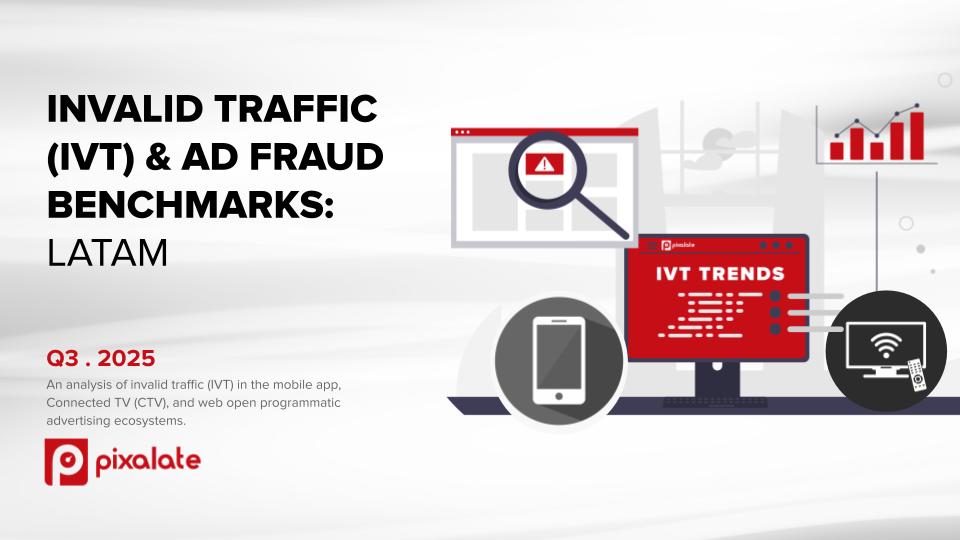The Connected TV (CTV) and over-the-top (OTT) programmatic advertising landscape went through a phrase of rapid growth in 2019, according to Pixalate's State of Connected TV/OTT: 2019 Ad Supply Trends Report.
The report details the state of growth around the world.
330% global rise in programmatic OTT/CTV ad transactions

According to Pixalate's data, between Q1 2019 and Q4 2019, global programmatic OTT/CTV ad impressions increase 4.3x — or 330%.
OTT/CTV programmatic advertising experienced rapid growth throughout 2019. When analyzing the data on a quarterly basis, we see that there was at least 50% quarter-over-quarter growth each quarter in 2019.
The OTT/CTV programmatic advertising landscape also ended on a strong note, as the largest single-quarter growth spike came in Q4:
- Q1 to Q2: 66% global growth in programmatic OTT/CTV advertising
- Q2 to Q2: 52% global growth in programmatic OTT/CTV advertising
- Q3 to Q4: 71% global growth in programmatic OTT/CTV advertising
- Q1 to Q4 (2019): 330% global growth in programmatic OTT/CTV advertising
State of Connected TV/OTT: 2019 Ad Supply Trends Report
Download a free copy of Pixalate's State of Connected TV/OTT: 2019 Ad Supply Trends Report to learn more.

What's in Pixalate's 2019 OTT/CTV programmatic advertising supply trends report:
Some data points that can be found in the report include:
- OTT/CTV programmatic advertising benchmarks
- Global OTT/CTV programmatic ad growth rates
- Breakdown of OTT/CTV device popularity
- OTT/CTV app growth
- Top supply-side platforms (SSPs) for programmatic in OTT/CTV
Disclaimer
The content of this post, and the State of Connected TV/OTT: 2019 Ad Supply Trends Report, reflect Pixalate’s opinions with respect to the factors that Pixalate believes can be useful to the digital media industry. Any proprietary data shared is grounded in Pixalate’s proprietary technology and analytics, which Pixalate is continuously evaluating and updating. Any references to outside sources should not be construed as endorsements. Pixalate’s opinions are just that, opinions, which means that they are neither facts nor guarantees.








